Bonne de Luxembourg, first wife of King Jean II the Good (le Bon), was born on the 20th of May 1315. She was the second daughter of John the Blind, King of Bohemia, and his first spouse, Elisabeth of Bohemia. When the baby girl first saw the world, she was not born in Luxembourg, and she was not named Bonne either. She was born in the kingdom of Bohemia and christened as Jutta, which was a German form of Judith and means ‘good.’
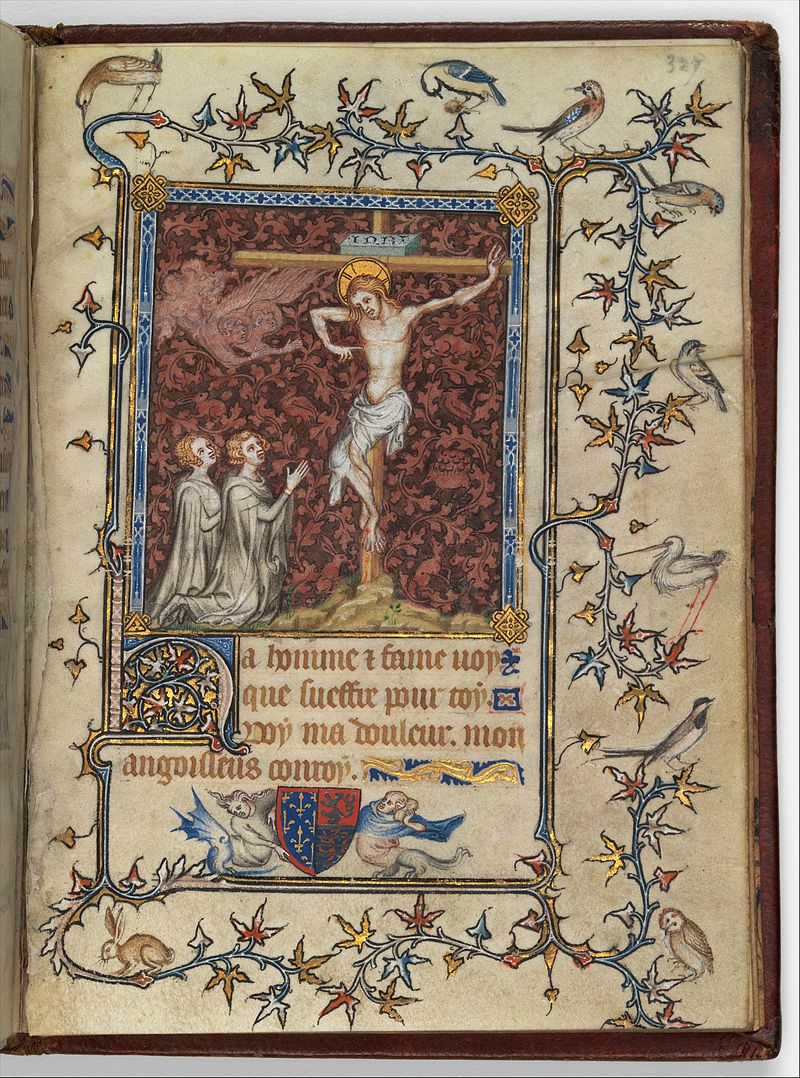
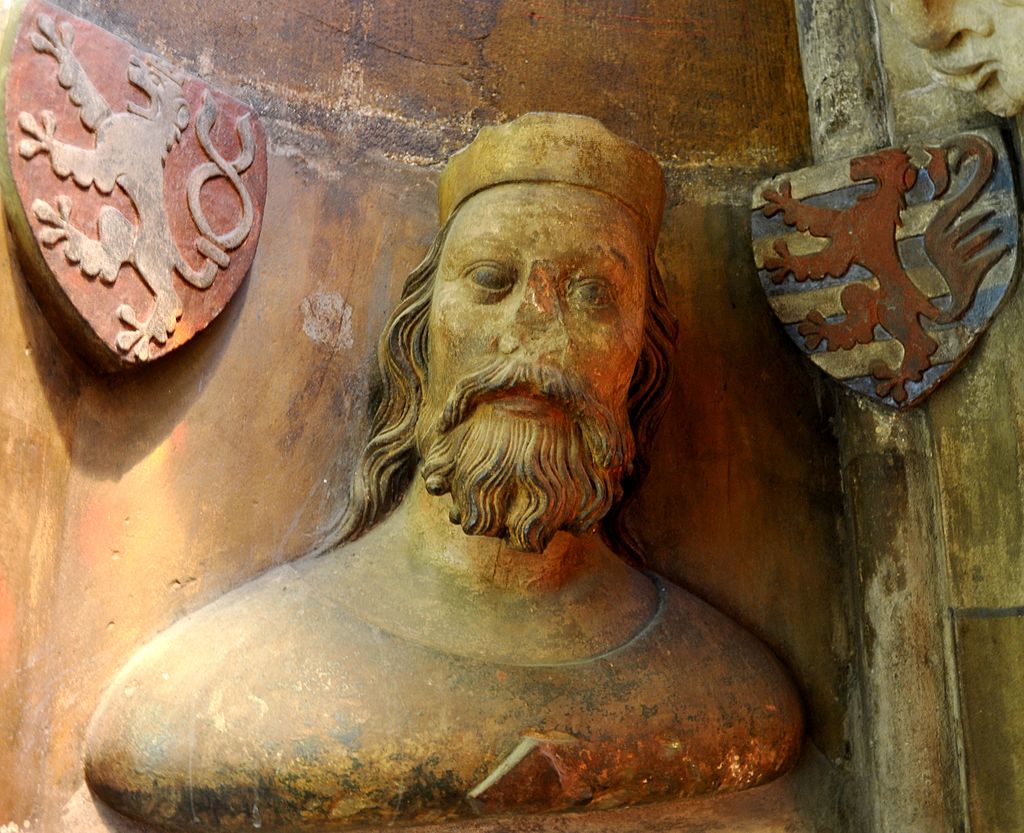
John the Blind, who received this nickname due to his serious troubles with eyesight in his late years, was a member of the House of Luxembourg. He was son of Henry VII, Holy Roman Emperor, and Marguerite of Brabant. John failed to become King of the Romans with the election of Louis IV of Bavaria known as the Bavarian (future Holy Roman Emperor and great pride of the House of Wittelsbach) in 1314. John married Elizabeth of Bohemia in 1310. Elizabeth was a daughter of King Wenceslaus II of Bohemia and his first wife, Judith von Habsburg. After the murder of Elizabeth’s brother, Wenceslaus III of Bohemia, who died without any legitimate issue, the struggle for the Bohemian throne between Henry of Bohemia and Rudolph von Habsburg started. Following Rudolph’s death in 1307 and Elizabeth’s marriage to John de Luxembourg, her husband invaded Bohemia, and the joint coronation of John and Elizabeth took place in 1311.
The spouses spent a lot of time in Prague and Bohemia. However, John was never liked by most of the Czech nobles, who considered him a foreigner. John’s marriage to Elizabeth was not particularly happy either, partly because it took Elizabeth 6 years to produce a much-needed male heir. Margaret and Bonne were born in 1313 and 1315, respectively. The relationship between the spouses improved slightly when Elizabeth gave birth to Charles of Bohemia in 1316 (future Charles IV, King of Bohemia and Holy Roman Emperor). In total, the couple had 7 children, out of whom 5 survived into adulthood. Later, John resolved to reassert his husbandly authority over his headstrong and scheming wife by taking their three eldest children – Margaret, Bonne, Charles – into his custody, and by prohibiting Elizabeth from participating in their upbringing.
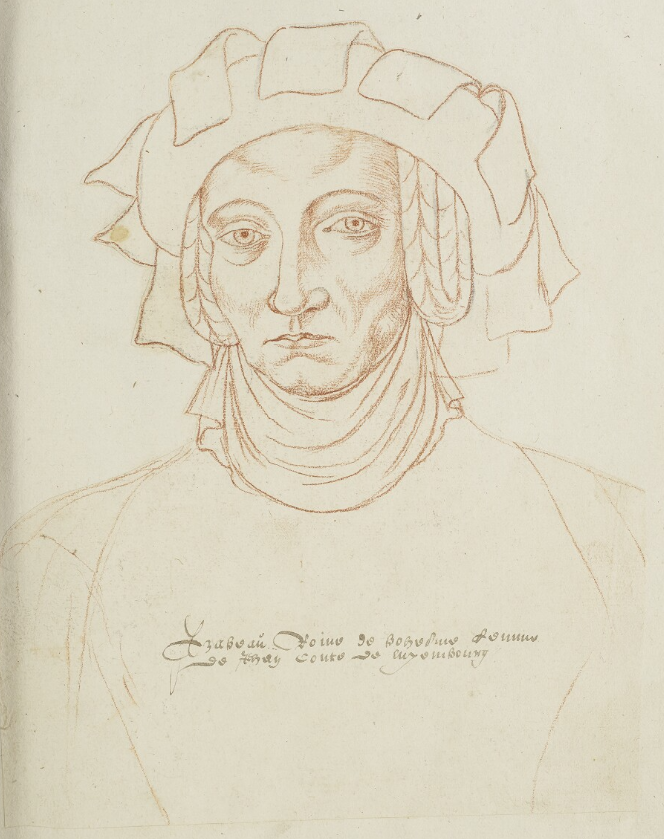
Her husband’s actions led to a wrathful outburst on Elizabeth’s part. The couple quarreled, and she moved to Mělník Castle with the rest of her children. John eventually sent their son, young Charles, to France in 1323 to receive his education there. Having given up the administration of Bohemia and left behind his wife, John began his journeys across Europe, and life led him to many places, including the Valois realm governed by King Philippe VI called the Fortunate (le Fortuné). A shocked Elizabeth also departed for Bavaria, where she birthed her last children – twins Anne and Elizabeth. Not financially supported by her husband, Elizabeth came back to Bohemia with only her daughter, Anne (her twin died). Feeling the hostility of her nobles who blamed her for the abandonment of the realm, Elizabeth died of consumption in 1330, at the age of 38.
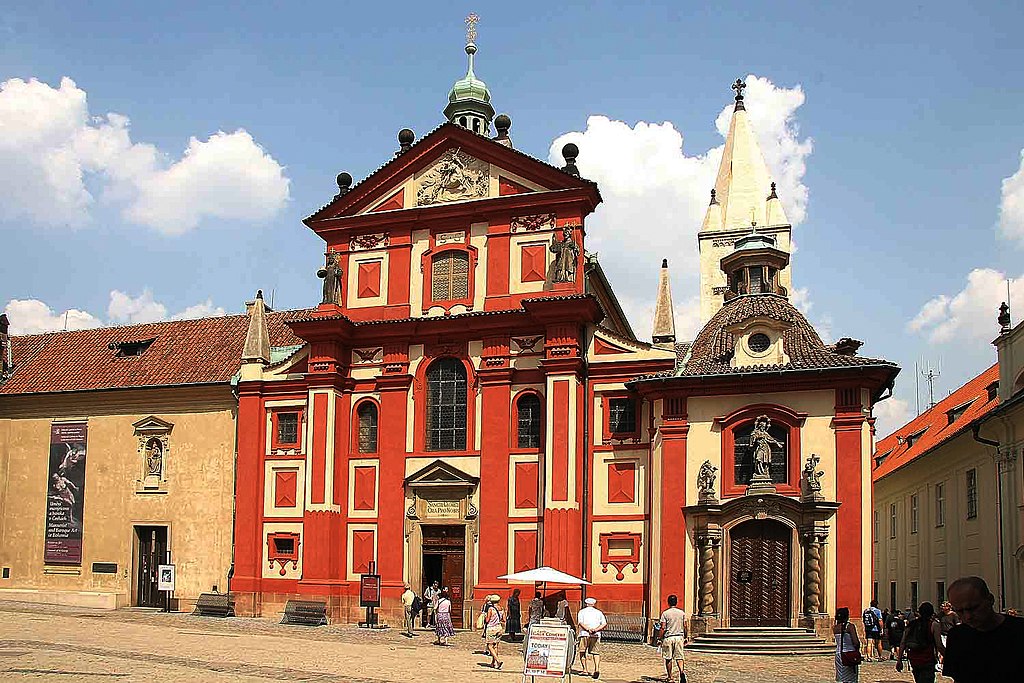
Young Jutta must have been unhappy to be separated from her mother at a very young age. She could have been taken away from her mother because according to some sources, Elizabeth plotted against her husband, but this cannot be proved. After the separation of her parents, Jutta had to lead a vagabond life between convents, which in the Middle Ages were special places used by aristocrats to house their offspring, in particular girls, and to provide them with good education. In 1322, the 8-year-old Jutta was sent to live in Meissen; nevertheless by 1323, the girl again resided in Prague in the convent of St George, a convent of Benedictine nuns located in Prague Castle in Bohemia. We do not know whether Jutta ever considered taking a veil, but her early life implies that she must have received a traditional education for noble girls at the time.
Before her parents’ separation, Jutta had been engaged to Casimir Wielki (future Casimir III the Great, who reigned as the King of Poland from 1333 to 1370), son of Władysław Łokietek. Later, her father’s plans for her fate changed, and in 1326, Jutta left Prague to marry Henri of Bar (future Count Henri IV of Bar). However, when the girl arrived in Luxembourg, John decided not to proceed with the wedding, so his daughter was compelled to live in the convent of Saint-Esprit in Luxembourg. Jutta must have been frustrated: she was approaching a marriageable age, and she lost two betrothed. At the time, John of Bohemia spent much time at the Valois court.
Prince Jean of France was the oldest surviving son of King Philippe VI of France and his first wife, Queen Jeanne of Burgundy called the Lame (la Boiteuse). Initially, Jean was supposed to marry Blanche of Navarre, who was an Infanta of Navarre as a member of the House of Évreux (a cadet Capetian branch). Yet, Philippe VI chose to cement his alliance with John of Bohemia because of Jutta’s childbearing age, and after the two men had signed a treaty. Jutta’s dowry was large: it amounted to 120,000 florins. According to their marriage contract and France’s treaty with John, in the event of a military confrontation with England or another country, Bohemia would have to provide the French with 400 infantrymen. It was a good alliance for Philippe VI because of the looming severe conflict against King England III of England.
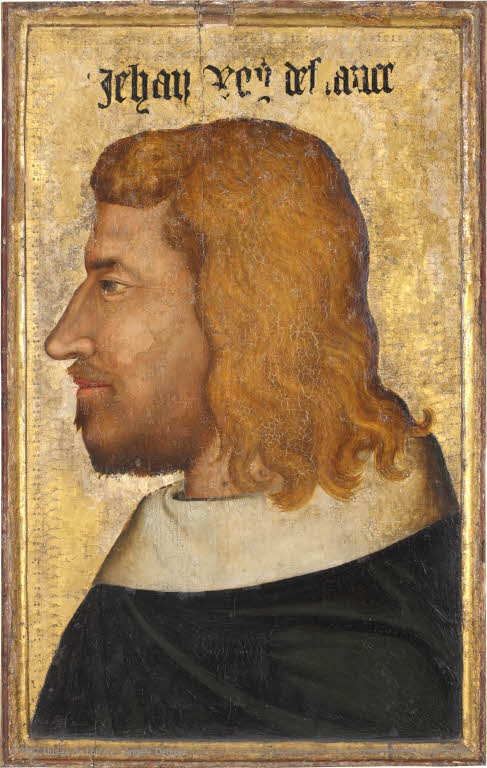
As Philippe’s heir apparent, Jean of France was created Duke of Normandy in 1332. His new bride’s birth name Jutta was swapped to the French equivalent Bonne. The 13-year-old Jean and Bonne, who was 4 years older than him, married on the 28th of July in Collegiate Church of Notre-Dame in the town of Melun, close to Paris, in the presence of 6,000 guests. The celebrations lasted for two months and ended with Jean being knighted at Cathedral of Notre-Dame in Paris. In the same church in Melun, years later another illustrious couple, both their descendants, married – Prince Louis de Valois, at first Duke de Touraine, and Valentine Visconti.
Bonne became Duchess of Normandy and was getting accustomed to her new role. Although Jean had reached the age of majority before the wedding, no child was born during the next 4 years. Bonne must have felt the pressure of producing a male heir. Most of the children of her mother and father-in-law did not survive into adulthood, although they still tried to produce offspring. In 1336, Philippe and Jeanne the Lame were finally lucky: Philippe, Duke d’Orléans, was born on the 1st of July 1336, which was a happy event for the French royal family, but not a good one for Bonne. At last, Bonne gave birth to a baby boy on the 21st of January 1338. The boy later became King Charles V of France known as the Wise (le Sage). After her first son’s birth, Bonne – a queen in waiting – was almost annually pregnant.
In total, Jean of France and Bonne had 10 children, out of whom 7 survived into adulthood. For the House of Valois, it was an excellent marriage from a genetic standpoint – Bonne and Jean were not closely related. This brought the much-needed fresh blood to their progeny and allowed most of their offspring to reach adulthood. Their children can be called the Valois Illustrious Generation, just as the Portuguese historians call princes of the House of Aviz – the sons of King John I of Portugal and Philippa of Lancaster. Many of Bonne and Jean’s descendants later intermarried, which partly caused the end of the senior Valois line and of the Orléans-Valois line.
Among Bonne’s children, the most accomplished one was King Charles V of France. The Wise King, whose commander Bertrand du Guesclin turned the tide of the Hundred Years’ War, and recovered much of the territory held by the English. Charles V’s policies also helped the realm, battered by war, to start its economic recovery, which nevertheless was interrupted by his death in 1380. Bonne’s second son – Louis I, Duke d’Anjou – was a grandfather of Queen Marie d’Anjou, wife of Charles VII of France. Bonne’s third son – Jean, Duke de Berry – was a prominent art collector, especially illuminated manuscripts and books, and a patron of the arts. Unfortunately, Jean de Berry and Bonne’s youngest son – Philippe the Bold (le Hardi), 1st Valois Duke of Burgundy – were largely responsible for the tremendous outflow of funds from the treasury of France for their personal needs during their regency during the monitory of King Charles VI the Mad (le Fou) and later during the many turbulent years of the insane monarch’s reign.
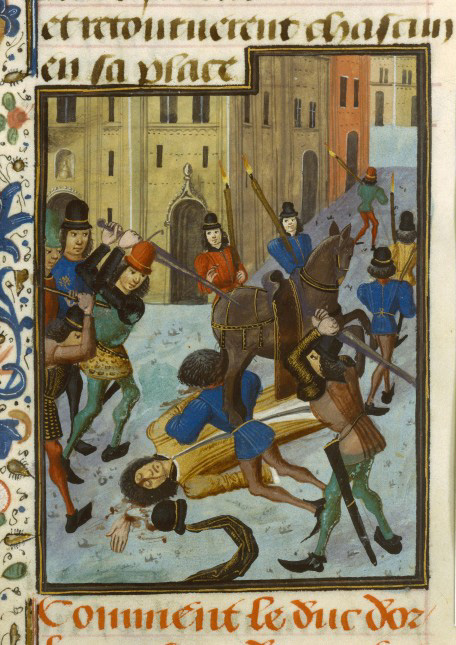
I do not think that Bonne would have been happy if she could have predicted that the greed of her sons, Jean and Philippe, would make France almost bleed out in peaceful time. Philippe the Bold was a famous patron of the arts: like Jean, he led a luxurious life and was also concentrated on confiscating as much funds form the French treasury as possible to build his strong Burgundy using both the wealth of France and the riches from his own domains. Bonne’s youngest daughter, Isabelle, married Gian Galeazzo Visconti, 1st Duke of Milan, and their only surviving daughter, Valentine, later became the spouse of Prince Louis, Duke d’Orléans (at first Duke de Touraine). I believe that Bonne would have been horrified if she had been told in her lifetime that her grandson – Jean the Fearless (Sans Peur), 2nd Valois Duke of Burgundy – would kill his first cousin and political opponent, Louis d’Orléans, in the most brutal way possible. Bonne, who by all accounts was a calm, dignified, and cultured woman, would have been shocked to learn that her Valois and Burgundian descendants would be involved in cruel internecine fighting for years.
Few people know about this, but the House of Bourbon are also descendants of the House of Valois in the female lines, and, hence, those of Bonne de Luxembourg. King Henri IV of France, 1st Bourbon monarch, was a grandson of King Henri II of Navarre and his consort, Marguerite d’Angoulême. Princess Magdalena of France, one of the daughters of Charles VII the Victorious (le Victorieux) and Marie d’Anjou, was a grandmother of King Henri II of Navarre. Marguerite d’Angoulême, who was the legitimate older sister of King François I of France, was a daughter of Charles, Count d’Angoulême, and Louise de Savoy. Count Charles d’Angoulême was a grandson of Jean d’Orléans, Count d’Angoulême and de Périgord, who was a son of Valentina Visconti and Louis de Valois, Duke d’Orléans. In other words, the House of Bourbon had and has a lot of Valois blood in their veins through the female bloodlines, and Bonne is their ancestress.
Bonne de Luxembourg received a good education in the convents where she lived for years. Despite her quiet and contemplative personality, she was a remarkable patron of the arts. Bonne adored and patronized the French composer Guillaume de Machaut, who was the central figure in the development of the ars nova style in medieval music. Bonne was also an avid reader, and she collected illuminated manuscripts. The Psalter of Bonne de Luxembourg, which nowadays is kept in the collection of The Cloisters in New York, USA, is a small illuminated manuscript in tempera, grisaille, ink, and gold leaf on vellum. This wonderful manuscript consists of 333 pages of splendidly illuminated parchments. The illustrations seem to have been made by the miniaturist Jean Le Noir, who worked in Paris between 1335 and 1380. In the same psalter, one can find elaborate graphic representations of astrological predictions by the Roman writer Manilius.
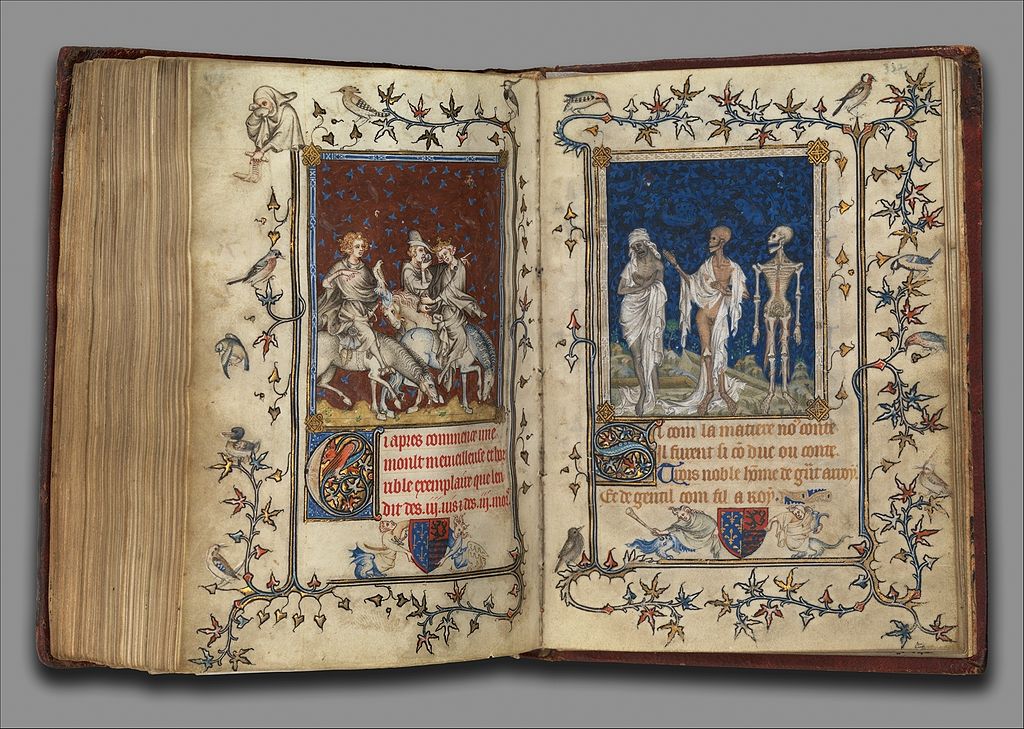
Her family life appears to have been tolerable after the birth of Charles V, but Bonne’s marriage was not based on strong affection. There was a persistent gossip that Jean of France was homosexual due to his extremely close relationship with his favorite, Charles de la Cerda. It cannot be proved for a certainty, but Jean was active in the marriage bed because Bonne quickly fell pregnant again and again after the birth of her many children. Her last daughter, Isabelle, was born in 1348, and they would undoubtedly have had more offspring if Bonne did not die on the 11th of September 1349 of the bubonic plague at only 34. Bonne was interred in the Abbey of Maubuisson, and her husband ascended to the throne of France on the 22nd of August 1350.
Bonne de Luxembourg was Duchess of Normandy and a queen in waiting for years. Had she lived for another year, she would have become Queen of France and would have been crowned with Jean II of France. Jean moved on quickly: on the 19th of February 1350, Jean married Jeanne I of Auvergne, Countess d’Auvergne and de Boulogne. Jean’s offspring with his second wife all passed away in infancy. It was for the better that Bonne did not see her husband’s disastrous defeat at the Battle of Poitiers of 1355 and his shameful behavior during his merry captivity in England.
All images are in the public domain.
Text © 2021 Olivia Longueville





